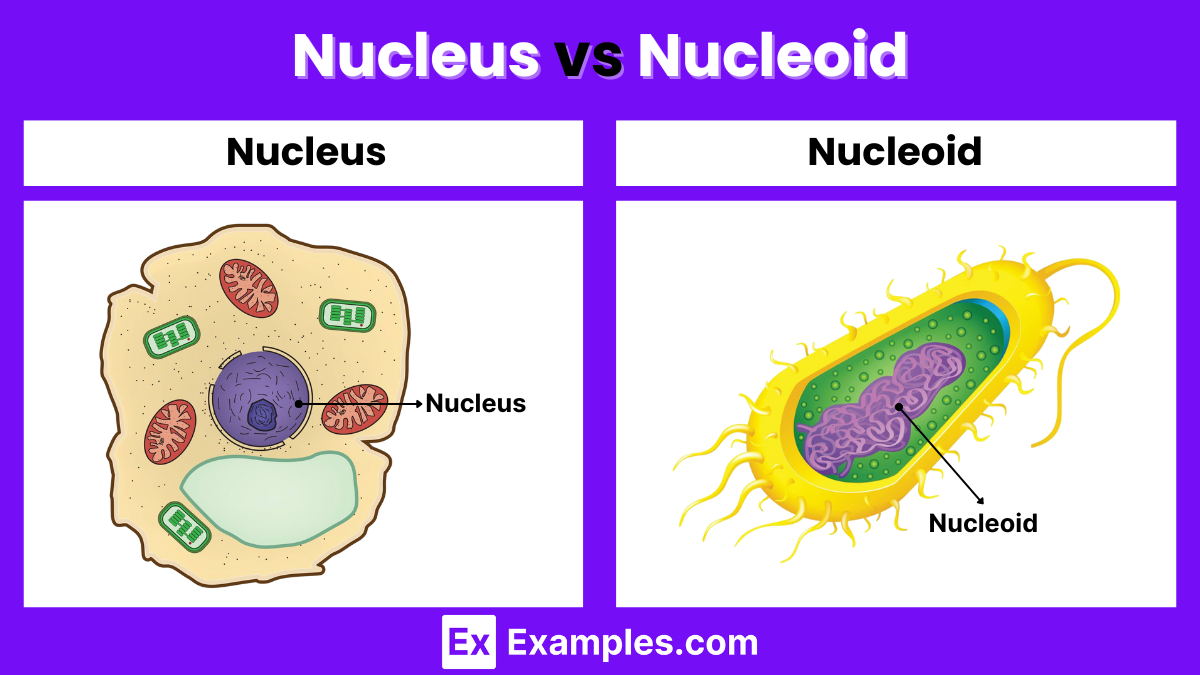What is the main difference between a nucleus and a nucleoid?
The nucleus is found in prokaryotic cells, while the nucleoid is in eukaryotic cells
The nucleus has a membrane, while the nucleoid lacks a membrane
The nucleoid stores DNA, while the nucleus stores RNA
The nucleoid is found in eukaryotic cells, while the nucleus is found in prokaryotic cells



